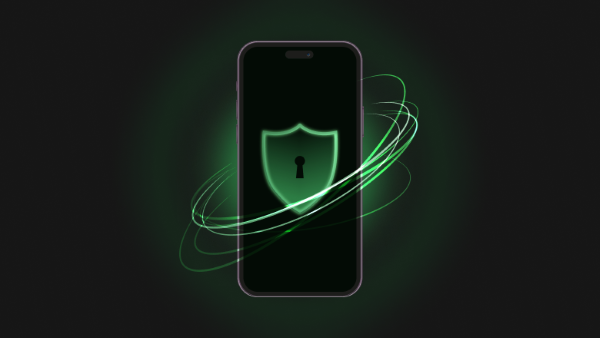- Use MDM encryption to protect corporate data.
- Enforce a strong password policy for company devices.
- Disable data exporting functions.
- Set up device feature limitations.
[2024 Newest] How to Prevent Unauthorized Access?
Today, companies can cover a large geographical area to deliver products and services. Apart from the positive impacts of digitalization, the risks of attacks also keep increasing as hackers get more space to exploit vulnerabilities in the network.
One of the significant causes of damage to the business is unauthorized access gained using various malicious techniques like SQL injections to breach data privacy and disrupt business operations. We will discuss how to prevent unauthorized access to the corporate data and network here.
1 What is Unauthorized Access?
Unauthorized access is an illegal and unethical way to access other's network. Malicious actors target networks and devices with weak coding and space to forcefully enter the system and exploit sensitive data. They bypass the security protocols using various vulnerabilities and hacking strategies like phishing, password decoding, and multiple injections.
Devices or networks with weak passwords are more exposed to such attacks. Unattended access can result in financial and reputational loss depending on the intentions of why he is trying to do so. So, businesses need to implement strong strategies and enforce security policies like enforcing strong password policies on enterprise devices and online accounts.

2 How to Prevent Unauthorized Access to Data?
Large enterprises need an optimized solution to manage corporate devices in bulk to ensure data security and integrity.
Manually handling and configuring multiple devices is time-consuming, and some misconfigurations might also occur. Here are some essential strategies for businesses who want to know how to prevent unauthorized access to data:
Enforce Data Encryption
Safeguarding sensitive data is necessary at rest or in transit. Data encryption is the only solution that helps enterprises prevent unauthorized access to data by converting data into a secure algorithm that is unreadable if someone accesses it.
The only way to read files is to decrypt the data using a key added while encrypting it. So, business administrators must ensure data security by encrypting it so hackers cannot misuse it in either way. Data encryption also ensures the safest communication for sharing files between two parties, keeping the service providers and hackers empty-handed if they try to exploit privacy.
Restrict data exporting
Data exporting can be a significant option for attackers to enter a company's network and get unauthorized access quickly. So, it is crucial for enterprises to strictly enforce restrictions on sharing data to non-work devices.
It may cause vulnerabilities and weaknesses, providing cybercriminals a chance to access the data. By turning off USB file transfer or external USB connection on corporate devices, you can restrict data export to maintain privacy, and businesses can reduce the risk of data breaches and unauthorized access to sensitive data.
Password Policy
Password policy is necessary to ensure authorized entities only access official devices. It helps enterprises outline rules and restrictions to set unique and strong passwords that are unpredictable and difficult to decode. Password policies contain regular updates of passwords after regular intervals to ensure compromised passwords are changed promptly and prevent access to sensitive data.
Businesses should restrict password-setting policies like the compulsion of upper- and lower-case letters, numbers, and symbols to ensure strong password authentications. Implementing such a policy helps enterprises to avoid hackers from accessing critical data that can cause severe reputational damage.
User Permissions Management
User permission management is a continuous access management process that needs regular updates and changes to ensure data security. It defines the level of access to the company's credentials and sensitive information for each employee depending on their designations. Incorporating the least privilege principle enables businesses to allow minimum access to data for employees.
Access permissions need to be recharged regularly when an employee clearly gets a new designation, and access should be managed according to the role the employee performs. For example, if an employee leaves a company, it is essential for enterprises to instantly block his device from accessing the company's data because the risk of reputational or financial damage from such entities is higher. Businesses can manage permissions for employees to factory reset devices or change safe or developer mode.
Avoid Malicious Apps
Every enterprise's prior consideration is to utilize the best and safest apps for their business. Implementing restrictions on employees' devices to delete or install any app without permission is crucial. Admins can manage app restrictions on bulk Android devices using a mobile device management solution to remotely manage and control apps for businesses.
With the app management feature of AirDroid Business MDM, enterprises can remotely restrict the installation or deletion of apps on employees' devices. They can also monitor device activities and application lists to discover unnecessary and malicious apps on devices and block access to keep the devices from cyber-attacks and prevent data leakage.
Regular Update Apps & Systems
By regularly updating apps and device system, enterprises can ensure their apps are efficient enough with knowledge of the latest known vulnerabilities and solutions to prevent them. Regular updates also help to fix bugs in the apps and software and remove vulnerabilities.
Sometimes, new updates also address compatibility issues with devices, and recent updates make them compatible with the latest features and security measures. Updated or older versions do not have the latest security features to cope with advanced hacking techniques, leading to data loss.
Implement Multi-factor Authentication
AirDroid Business MDM allows admins to set more than one authentication to access devices; thus, the chances of data breaches become zero. Multi-factor authentications enhance the security of corporate devices and ensure that only authorized persons can access them to use data.
These authentications include biometric verification like a fingerprint or eye scanning. It also includes a code sent to your email or mobile number that verifies that only an authenticated person is accessing the device or account.
3 How to Prevent a Network from Unauthorized Access?
Preventing unauthorized access to a network is as crucial as access to sensitive data because unauthorized access ultimately results in a breach of a company's privacy and confidential information. Here are some precautionary steps businesses need to consider while securing their network from malicious actors:
Monitor and Log Network Activity
Businesses must regularly monitor and log network activities to identify and diagnose irregular and suspicious behavior. Utilizing an intrusion detection system (IDS) and intrusion prevention system (IPS) is the most appropriate way to automatically detect and prevent malicious activity in the network. It keeps the network safe from internal and external threats that can exploit privacy and get unauthorized access.

Firewall
A firewall helps you to monitor and control network traffic. It acts as a shield to protect a business's digital network from internal and external attacks. It filters the traffic by following pre-configured regulations to prevent malicious attacks and malware from spreading in the system.
Network segmentation
Network segmentation distributes the network into a few zones to manage network security more precisely. It also helps to prevent unauthorized access to the whole network, so that if any part is compromised, it does not disrupt all business operations. It allows businesses to limit the impact of cyber-attacks on the entire network.
Security Awareness Training for Employees
Businesses can ensure network security by conducting regular training sessions and awareness programs for employees. These programs must focus on different ways cybercriminals exploit system vulnerabilities so employees can avoid such activities as phishing and social engineering.
4 Common Causes & Consequences of Unauthorized Access to Your Business
Unauthorized access can result in severe consequences for the corporate sector by affecting companies, stakeholders, and customers. Let's discuss a few common causes and consequences businesses face if they are exposed to unauthorized access:
Common Causes:
Phishing Attacks: Phishing is one of the most widely practiced methods to trick employees and access their sensitive information. Phishing includes a fake page sent to the user. When a user enters credentials on that page, they are stored in the database, and the hacker can easily access it and try it on the official page to open an email or social media account.
Weak Passwords: The use of weak passwords on official devices leads to unauthorized access. Cybercriminals are experts in guessing passwords. They also use decoding and other techniques to access a device with simple passwords that are not case-sensitive and do not include numbers.
Insider Threats: Company employees can sometimes become a reason for data breaches, intentionally or unintentionally.
Lack of data encryption: Leaving the data open and readable without encryption can easily enable unauthorized users to access and misuse it.
Unsecured network: Insecure Wi-Fi connections and excessive data sharing can add vulnerabilities to the network, causing damage to the business.
Malware:
Malicious attacks by malware can compromise data security, leading to data breaches.
Consequences
Unauthorized access to a business can have severe consequences, including compromise of sensitive data or causing financial losses due to legal penalties, fines, and damage to reputation.
It can also disrupt the normal flow of business operations, steal intellectual property, and expose customers to identity theft risks. Further, companies may suffer legal consequences and lose stakeholders' trust, affecting competitiveness and market position.
5 5 Best Practices to Prevent Unauthorized Access
Here are the best practices to ensure only authorized users can access network and sensitive data:
Implement Strong password policies
Ensure that strong password policies are enforced, such as periodical updates and complexity requirements, including numbers symbols and upper and lower case letters. Also, implement multi-factor authentication MFA, which requires users to provide multiple forms of identification for access.
Regularly update software and mobile applications
Businesses must keep all software, operating systems, and applications patched with the latest security updates. Admins can utilize MDM solutions to automatically trigger app and software updates on bulk devices so that every device can have strong and updated security measures. The regular update ensures protection against any known vulnerabilities and attacks of unauthorized people.
Apply Network Segmentation
You can segment your network with separate access controls and limit the scope of unauthorized connections. This approach helps ensure that risk in one network segment does not automatically put the whole system at a compromise and ensures work continuity by affecting only a limited area. It helps to minimize the effect of cyber-attacks on the system.
Access Controls and User Permissions Management
Assign user permissions by the principle of least privilege. It helps admins to ensure limited user access to the lowest level possible based on their roles or job responsibilities and update permissions regularly. It is also necessary to manage app permissions on devices and remove permissions for employees who have left the company.
Monitor and log activities
Businesses should incorporate extensive network logging activities and monitor them regularly to identify unauthorized access to the network. Monitoring and logging give insights into all activities occurring in the business digital network so security teams can immediately take action to prevent damage.
6 Final Words
Accessing other's data by performing illegal attempts is a common practice of cyber criminals, making it compulsory for business entities to adopt precautionary measures. Enterprises can implement various strategies to protect malicious attackers from their sensitive data. Unauthorized access to data and networks can cause severe business issues, such as financial and reputational loss or downside.
Companies can prevent unauthorized access by enforcing data encryption, restricting data exporting, and creating security policies like multi-factor authentications. You can avoid malicious apps and manage device permissions to ensure data security. You can stop illegal access to the network by using firewalls, managing network segments, and training employees. Businesses need to implement an MDM solution to remotely control and manage corporate devices.
Still need help? Submit a request >>


